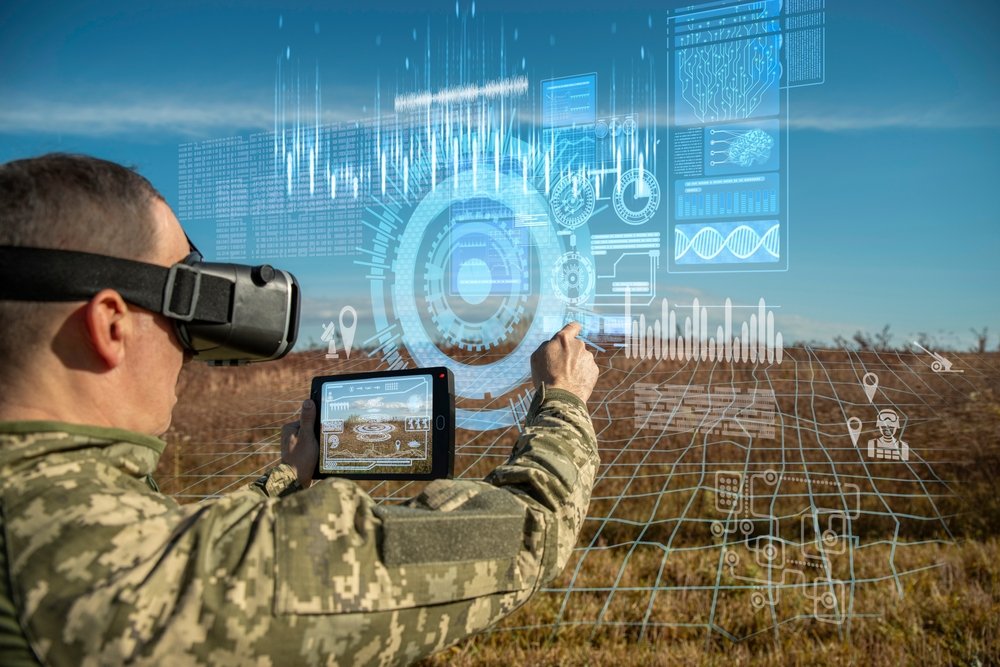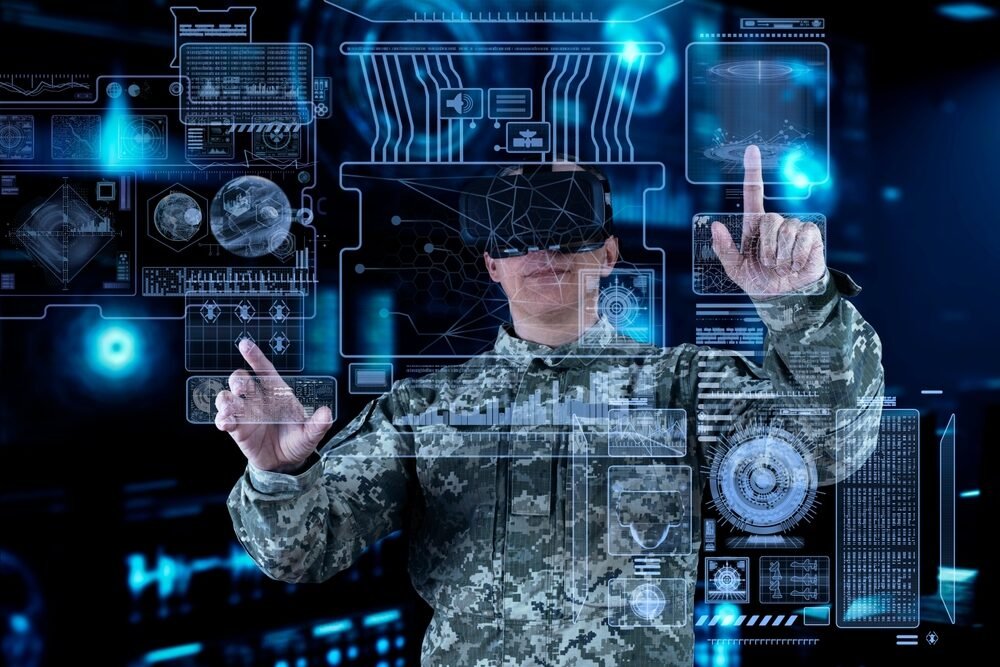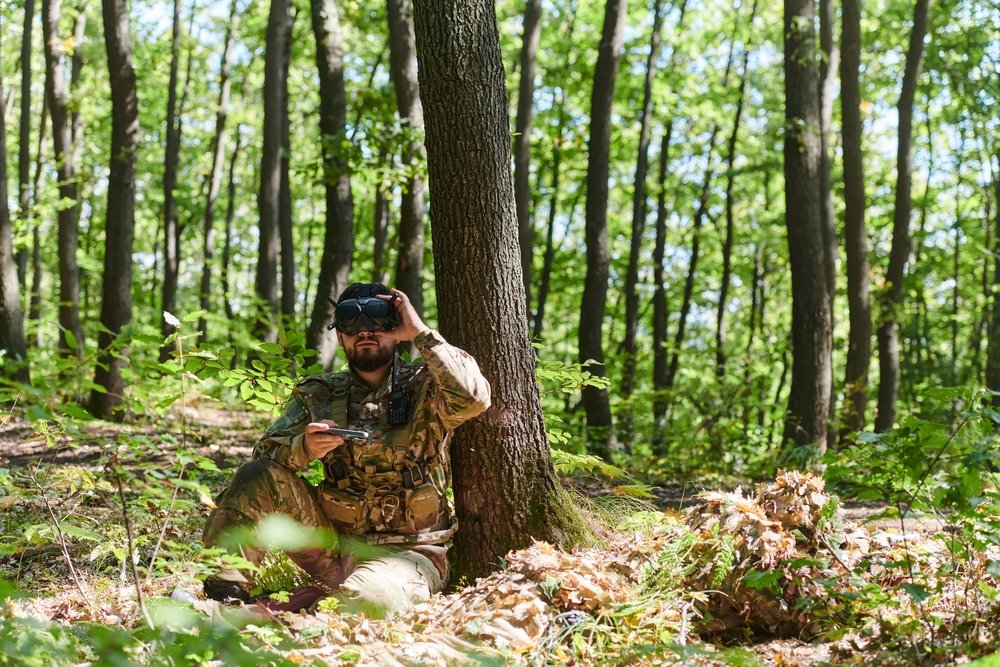Augmented Reality Is Giving Soldiers a New Kind of Vision

On today’s battlefield, vision can be everything and military-grade augmented reality (AR) is quietly revolutionizing what soldiers can see and do. Using AR headsets that overlay digital information onto the real world, soldiers can now access live maps, enemy positions, language translations, and drone feeds without ever looking away from their surroundings. It’s like having a video game-style HUD built into their helmet.
This kind of enhanced perception makes decision-making faster and more precise. A soldier can look at a building and instantly know its layout, threats, and heat signatures. But as impressive as it sounds, this new “super vision” also raises concerns. Will soldiers become too reliant on AR to function? Could tech glitches or hacking compromise entire missions? Augmented awareness may improve survivability, but it also changes what it means to fight and trust in high-stakes, real-world environments.
AR Tech Is Being Designed to Read Minds and Predict Behavior
Beyond visuals, some of the most experimental military AR systems are tapping into biofeedback to monitor a soldier’s physical and mental state in real time. Heart rate, stress levels, muscle tension, and even patterns in brainwave activity are being explored to anticipate fatigue, emotional spikes, or decision hesitation and the system can then respond accordingly.
The goal is to keep soldiers operating at peak performance, but it edges close to something more controversial, a kind of technological mind-reading. If the AR headset “knows” when a soldier is afraid or distracted, it might alert commanders, or adjust mission inputs automatically. While this could save lives, it also blurs personal privacy. In high-pressure combat, where every second counts, having your emotional state tracked and analyzed by a machine could feel like both a support system and a surveillance tool. It begs the question — when your own gear knows you better than your commander does, who’s really in control?
Real-Time Data Sharing Is Turning Combat into Coordinated Chess

In traditional warfare, information bottlenecks cost lives. Orders move slowly, visibility is limited, and confusion reigns. But AR is changing that, turning fragmented units into synchronized networks. When every soldier can see what every other team member sees, missions become highly coordinated, like chess moves on a digital board.
Real-time data sharing through AR means that frontline troops, commanders, drones, and remote analysts can all operate on the same page. This synchronization makes it harder for enemies to exploit gaps or catch soldiers off guard. But as AR becomes the norm, it introduces a dangerous dependency. If the network fails, or if enemy forces jam the signal, highly trained soldiers may suddenly feel blind, out of sync, and vulnerable. The shift from independent action to collective tech-driven tactics could weaken adaptability, the very thing that once defined battlefield success.
Superhuman Speed and Accuracy Come at a Cost
With AR feeding live intel directly into a soldier’s line of sight, response times shrink. Targeting becomes faster. Shooting decisions are supported by trajectory predictions and environmental overlays. In essence, soldiers can now move and act with superhuman efficiency, something that’s already being tested in elite units.
But such efficiency doesn’t leave much room for pause or reflection. With faster decision-making comes a greater risk of reacting too quickly especially in complex situations involving civilians or unclear threats. If technology encourages soldiers to trust the data over their own instincts, the moral weight of pulling the trigger could shift. And if the AR system makes a mistake, who bears responsibility? These superhuman enhancements may improve combat effectiveness, but they also complicate accountability in ways we’re just beginning to grapple with.
Enhanced Soldiers May Face New Psychological Pressures
Fighting with advanced AR gear is not just physically intense, it’s psychologically complex. Soldiers are no longer just reacting to their senses but are constantly processing digital layers of information. The mental load of juggling reality and virtual overlays could lead to sensory fatigue, cognitive overload, or increased anxiety over time.
Even off the battlefield, the pressure to perform at a “tech-optimized” level may affect self-worth and mental health. If a soldier falters, is it their fault or the fault of the system that didn’t catch it? There’s also concern that soldiers might feel dehumanized, treated more like extensions of the technology than as human beings. The line between operator and tool is becoming thinner, and that could leave lasting emotional scars, long after the mission ends.
The Tech Might Widen the Gap Between Nations
As powerful as AR tech is for modern soldiers, it’s also expensive, secretive, and largely concentrated within wealthier nations’ militaries. This means countries with access to advanced AR systems will have a decisive edge over those without. It’s not just a question of firepower anymore — it’s about situational awareness, coordination, and speed, all enhanced by digital overlays and AI-driven input.
This technological imbalance could shift the global power structure in ways that are hard to predict. Smaller or developing nations may be forced to rely on less advanced tactics, while those with augmented soldiers dominate with almost video game-like precision. In the long run, AR-enhanced warfare could raise the stakes of conflict, making wars harder to avoid and more uneven. The battlefield of the future may not just be defined by strength, but by who can see, react, and decide the fastest — with tech, not troops, calling the shots.
Hackable Soldiers Are Becoming a Real Possibility
One of the less talked-about risks of integrating AR into military gear is the possibility of hacking. These systems rely on networks, software updates, cloud syncing, and sometimes even biometric inputs. If an enemy gains access — even briefly — they could distort the feed, spread disinformation, or sabotage the soldier’s situational awareness.
A corrupted AR display could feed a soldier false enemy positions, make friendly units appear hostile, or suppress vital data like ammo levels or terrain warnings. The more connected soldiers become to their equipment, the more vulnerable they are to digital warfare — a type of attack that doesn’t require bullets or bombs. The idea of “hacked humans” isn’t just the stuff of sci-fi thrillers anymore. As the military builds smarter systems, it also needs to build stronger defenses — not just for bases and drones, but for the minds and eyes of those on the ground.
AR-Driven Combat Blurs the Lines Between War and Simulation
With AR systems overlaying battlefields in real time, the act of fighting starts to resemble a hyper-realistic video game. Virtual enemies, target markers, color-coded routes, and digital health monitors can make combat feel more like simulation than actual life-and-death decision-making. This gamification of war has major psychological consequences.
Soldiers might react faster — but they may also become emotionally disconnected from the consequences of their actions. If everything is wrapped in a sleek digital interface, it might dull the gravity of violence. This disconnect can influence post-combat trauma, increase the risk of moral injury, and challenge traditional ideas of accountability. If the battlefield feels more virtual than real, how do we teach empathy, restraint, and reflection in war? That question is already emerging in pilot programs — and will only grow louder as AR tech becomes standard issue.
The Definition of a Soldier Is Rapidly Changing
With AR headsets, AI assistance, biometric sensors, and smart weapons all connected, the image of a lone soldier acting on instinct is becoming outdated. Soldiers are evolving into fully integrated human-machine systems, where decisions are part data-driven process and part human command. In many cases, the human is no longer the center of control — just one piece in a much larger algorithmic loop.
This shift raises fundamental questions. What does it mean to be a soldier if your gear is thinking, tracking, and even advising faster than you are? Who gets the credit or the blame when decisions go right or wrong? The romanticized idea of battlefield valor may not survive in a world of digitally enhanced warriors. The soldier of the future may look more like a living terminal plugged in, processing, executing than the boots-on-the-ground archetype we’ve always imagined.
Military AR Is Coming Home Whether We’re Ready or Not

Technologies developed for war rarely stay on the battlefield. Just like GPS and the internet, military AR is likely to find its way into civilian life — through law enforcement, security, construction, and even gaming. That means the ethical questions we ask now will shape how AR is used later, in schools, workplaces, and public spaces.
Imagine police officers with real-time face recognition and behavioral profiling, or warehouse workers navigating digital overlays that track their every move. While some applications could improve safety and efficiency, others could erode privacy, increase surveillance, or place too much power in too few hands. The story of AR in the military isn’t just about future wars — it’s about how this tech will eventually define how we live, work, and relate to one another. The battlefield is only the beginning.
